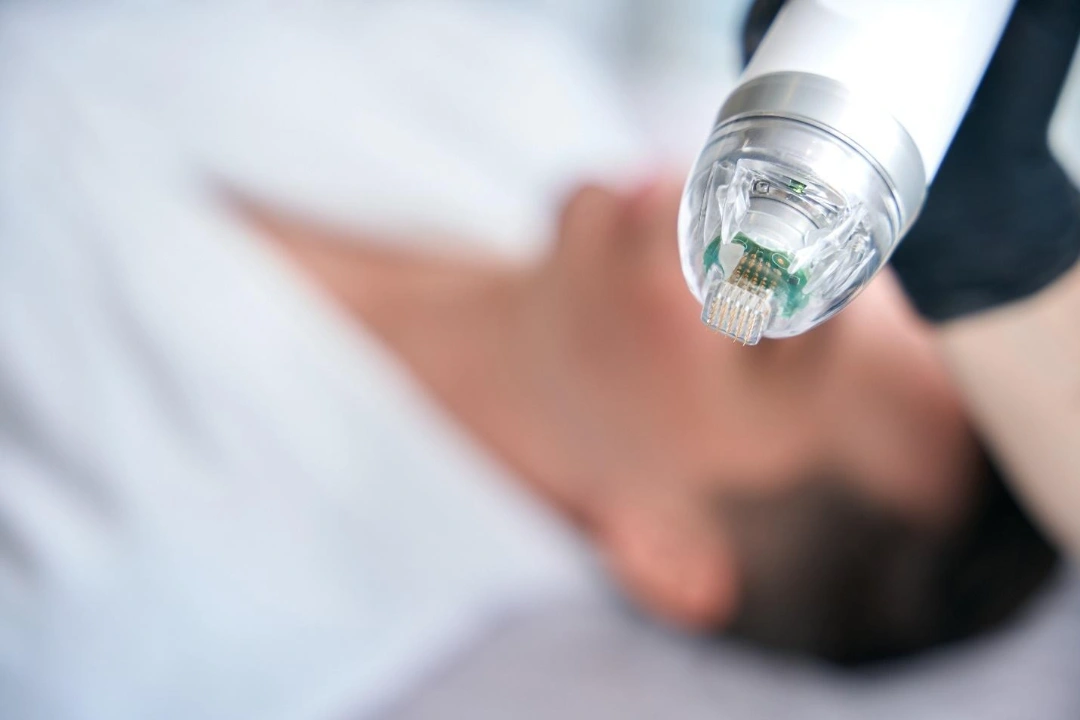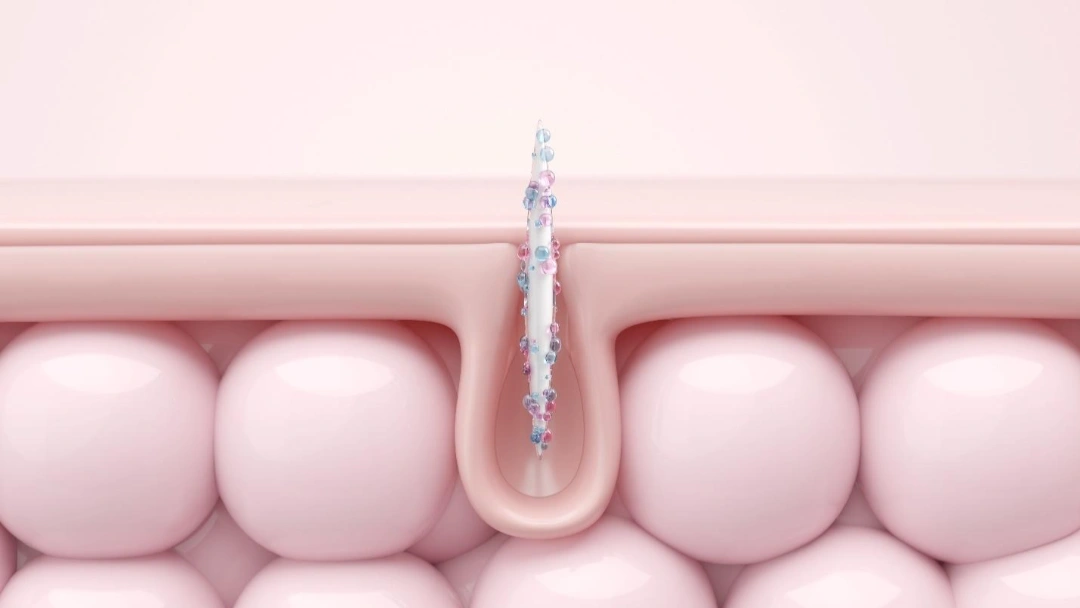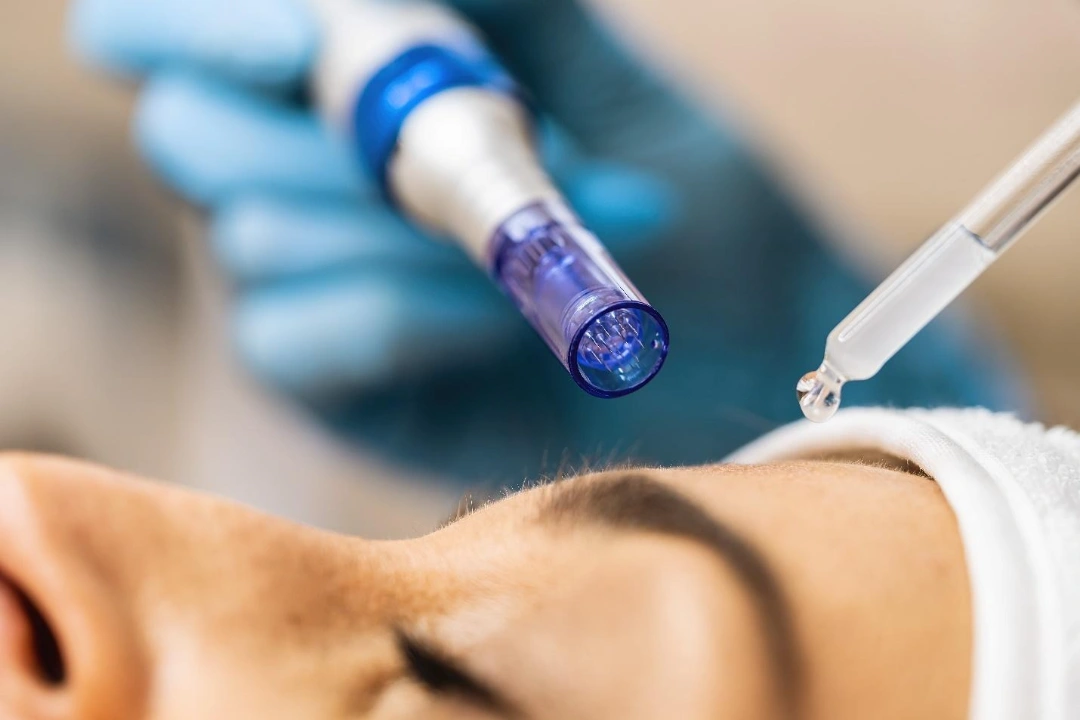At Livingstone Dermatology, we understand that your skin is a reflection of your health and well-being. We are committed to the latest advancements in dermatological science, and dedicated to providing you with quality care.

Healthy skin repairs itself constantly. But over time, that process slows down, leading to fine lines, scars or uneven texture.
Microneedling gently reawakens your skin’s natural renewal. By creating precise and controlled microchannels it stimulates the production of collagen and elastin. These are 2 vital proteins that keep skin firm, smooth and resilient.

Microneedling is a minimally invasive treatment that encourages your skin to renew itself from within.
A pen-like device with fine, sterile needles is used to make tiny punctures on the skin surface. These controlled micro-injuries trigger the body’s natural healing response, promoting new collagen formation and skin cell turnover.
Unlike treatments that rely on external resurfacing, microneedling strengthens your skin from the inside out, leading to firmer texture, improved tone and a more luminous complexion.
Its effectiveness lies in its ability to harness the skin’s regenerative cycle. Each session follows 3 biological stages of healing:
| Stage | Description |
|---|---|
| Inflammation Phase (0 to 2 days) |
|
| Proliferation Phase (2 to 7 days) |
|
| Remodelling Phase (1 to 3 months) |
|
Although both treatments aim to refresh and rejuvenate the skin, they work through different mechanisms:
| Element | Microneedling | Microdermabrasion |
|---|---|---|
| Mechanism | Creates micro-injuries to stimulate collagen formation within deeper skin layers (dermis). | Exfoliates the surface (epidermis) using fine crystals or a diamond tip. |
| Depth of Action | Targets the dermis for long-term structural improvement. | Works only on the outer layer for temporary smoothness. |
| Best For | Acne scars, fine lines, pigmentation and skin laxity. | Dullness, rough texture and mild congestion. |
| Results | Progressive, lasting improvement in tone and texture. | Immediate but short-term brightness. |
The treatment offers far more than just smoother skin. It enhances the skin’s ability to heal, renew and absorb nutrients more effectively.
In fact, some of the key benefits are:
Microneedling is suitable for a wide range of dermatological and aesthetic concerns, including:

Every microneedling journey begins with understanding your skin’s unique needs. At Livingstone Dermatology, our goal is to make the process comfortable, transparent and reassuring.
Microneedling is a straightforward, minimally invasive treatment with little downtime, but the attention to detail before, during and after your session ensures optimal results and safety. Here’s a step-by-step look at what happens during your treatment journey.
Before the treatment
Our dermatologist will begin by assessing your skin type, condition and treatment goals. This helps determine the appropriate needle depth and number of sessions for your skin concerns.
To ensure your skin is well-prepared:
During the treatment
The session usually takes 30 to 60 minutes, depending on the treatment area. Once the numbing cream has taken effect, our dermatologist will use a medical-grade microneedling pen fitted with fine and sterile needles.
As the device glides across your skin, it creates controlled microchannels that stimulate collagen and elastic production. You might feel a light vibration or prickling sensation, but most patients find it very tolerable.
Throughout the session, our dermatologist monitors your comfort closely and may apply soothing serums or growth factors to enhance skin regeneration.
After the treatment
Immediately after treatment, your skin may appear slightly pink or warm, which looks similar to a mild sunburn. This is a normal response that typically fades within 24 to 48 hours.
The post-procedure care includes:
You will likely notice your skin feeling softer and more supple after just a few days. As collagen continues to rebuild beneath the surface, texture, firmness and clarity improve steadily over the next several weeks.
Healing is typically smooth and quick, with most patients able to resume normal activities the next day.
Microneedling results appear gradually, but they are deeply restorative and long-lasting.
Within a few weeks, most patients notice:
Because collagen continues to be remodelled for months after treatment, results peak around 8 to 12 weeks and can last for over a year with good skincare and sun protection.

The number of microneedling sessions varies from person to person, depending on your skin condition, goals and how your skin responds to collagen stimulation. While some improvement may be visible even after one treatment, collagen remodelling takes time and consistent sessions often deliver the best and longest-lasting results.
At Livingstone Dermatology, our dermatologist will create a personalised treatment plan tailored to your needs, which may include:
Healthy and youthful skin is not about reversing age. It is about restoring balance and vitality.
Microneedling offers a safe and natural way to help your skin repair itself from within. With the right expertise, it is also a highly treatable and customisable option for a wide range of concerns, from acne scars to dullness.
At Livingstone Dermatology, your comfort and safety always come first. Our dermatologists combine precision technology with medical understanding to help your skin renew itself, beautifully and confidently.
Book an appointment today and take the first step towards smoother, stronger and healthier-looking skin.

Is microneedling painful?
Most patients find it comfortable, as a numbing cream is applied beforehand. You might feel light tingling or warmth, but discomfort is minimal.
How soon can I see results?
Initial improvements can be seen within 1 to 2 weeks, but collagen rebuilding continues for up to 3 months. The results are progressive and natural-looking.
Is there downtime?
You may have mild redness or flaking for 1 to 2 days, but most patients return to daily activities the next day.
Can microneedling be done on darker skin tones?
Yes. Microneedling is safe for all skin tones because it does not rely on heat or light, reducing the risk of post-inflammatory pigmentation.
Can I combine microneedling with other treatments?
Absolutely. It pairs well with treatments like chemical peels, platelet-rich plasma (PRP) or topical serums for enhanced collagen and glow. Our dermatologist will recommend the best combination for your skin.
Who should avoid microneedling?
While microneedling is safe for most individuals, there are a few exceptions. You may be advised to postpone or avoid treatment if you:
Our dermatologist will evaluate your skin and medical history to determine suitability, ensuring the treatment is both safe and effective for your specific condition.
How can I maintain my results?
Protect your skin from the sun, use gentle daily skincare and schedule maintenance treatments every few months for continued rejuvenation.